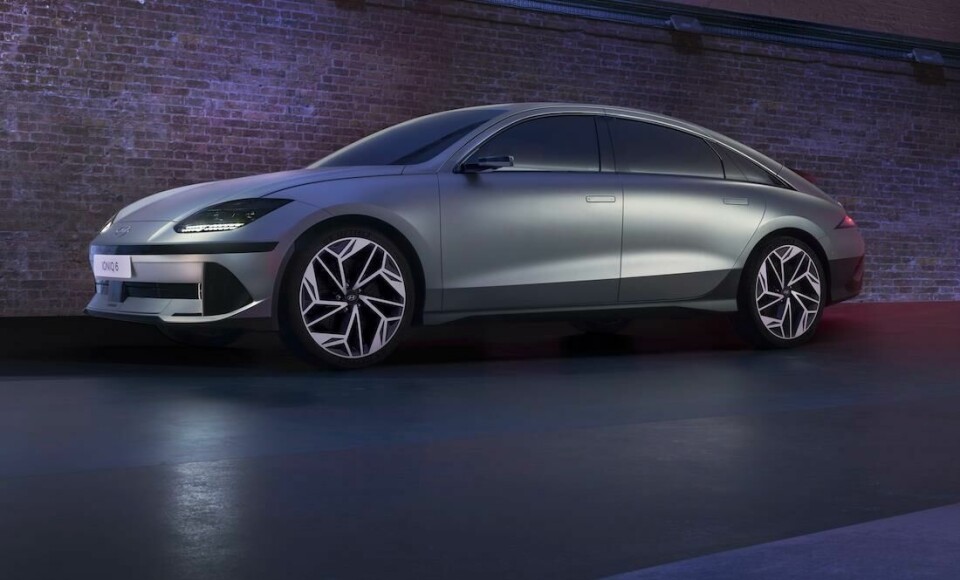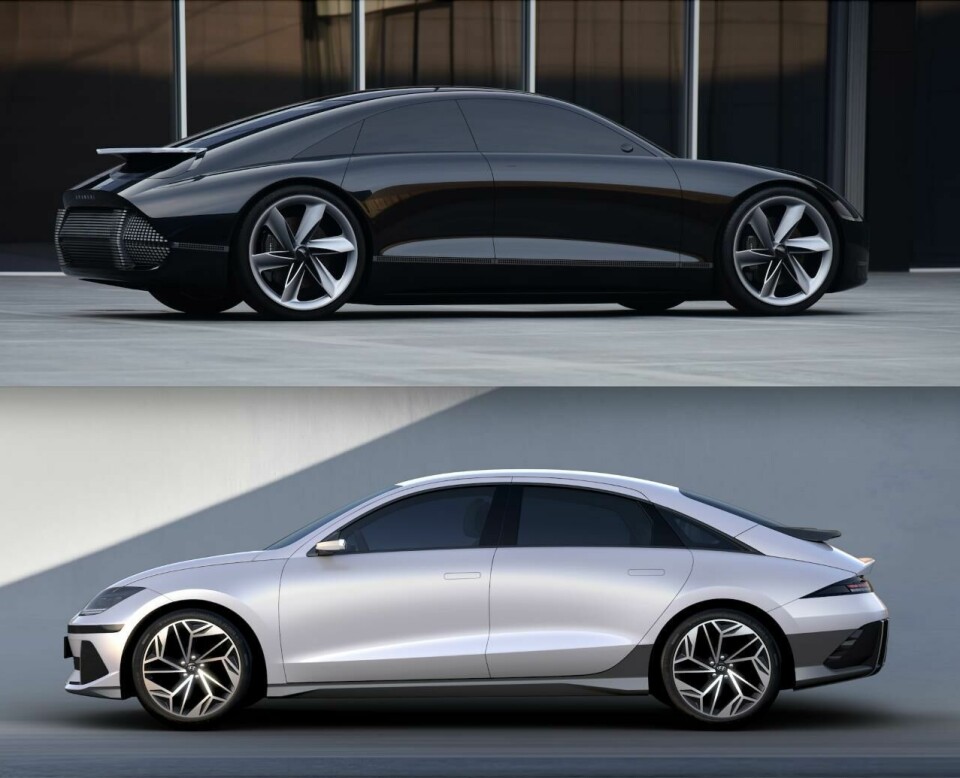
Hyundai Ioniq 6 breaks cover
Car Design News was invited for a sneak peek at Hyundai’s next electric car, the Ioniq 6, which looks refreshingly like the Prophecy concept
The 2019 Hyundai 45 and 2021 Ioniq 5 set the template: make a fantastic concept and then follow up with a production car that actually looks a lot like it.
Now it’s the turn of the 2022 Ioniq 6, which anyone with two good eyes will realise has a close relative in the 2020 Prophecy concept and represents the second proper production instalment of Hyundai’s dedicated electric vehicle brand Ioniq. At a ‘closed-doors’ preview, conducted conveniently for Car Design News in London in May 2022, we had a good look around and sit inside the Ioniq 6 with SVP of Hyundai global design, SangYup Lee, in close attendance. As the embargo lifts, we can now explain more…

Before the reveal itself, in a tucked-away indoor location in Shoreditch, first impressions of the Ioniq 6 were assisted by a slide presentation that showed both the 2020 Prophecy concept and the 2022 Ioniq 6 production car side by side to prove the point of how close they are. That shows confidence.
The production 6 does have smaller (20- or 18-inch) wheels, a higher roof, more shutlines and slightly more fiddly front and rear end details than the Prophecy concept, but it still looks very striking and crucially retains that appealingly curvaeous rear-sloping roofline. Hyundai calls it ‘streamliner’ design and Lee says every surface was honed via wind tunnel research, citing the shapely 1936 Stout Scarab, 1938 Phantom Corsair and 1947 UrSaab as historic inspirations.
The rear light signature is also pixelated and inspired in part by the famous red lights of the KITT car (based on a 1982 Pontiac Firebird Trans Am) that featured in the Knight Rider TV show
The Ioniq 6’s surfacing is similarly smooth, unencumbered by protruding door handles while the overall design features optional smaller rear cameras instead of larger conventional wing mirrors. At the front, active flaps activate as necessary for aero benefit and a flush black band below the bonnet hides all the sensors necessary for a 2022 production car. The pixel headlight details that are becoming a signature of the brand and a link between the otherwise different Ioniq silhouettes, are also present and correct.
Hyundai didn’t reveal the Prophecy’s dimensions at its 2020 launch, but a useful D-segment sedan product to compare the Ioniq 6 to is the current Hyundai Sonata, which at 4900mm long, 1860mm wide, 1445mm high and with a 2840mm wheelbase is longer, lower narrower and with a shorter wheelbase than the Ioniq 6’s 4855mm length, 1880mm width, 1495mm height and 2950mm wheelbase. At the rear of the car the C-pillar is slimmer than the Prophecy’s as it graduates to the boot lid – there’s no ‘lift back’ hatch like on the Tesla Model S – but it’s still a pleasing progression.
The rear light signature is also pixelated and inspired in part by the famous red lights of the KITT car (based on a 1982 Pontiac Firebird Trans Am) that featured in the Knight Rider TV show. Indeed, Lee says he owned a toy model of the same car as a kid. Lee also says the ‘pixel’ motif resonates across more than his generation too – looking like a letter from the early Korean language more than 600 years old, helping to create the simple graphics of 70s arcade games and used as a building block in 00s video game Minecraft.
The Ioniq 6’s interior is equally impressive, following on from the Ioniq 5’s clean and spacious package and made possible by its generous and EV-dedicated wheelbase. Sitting inside, rear legroom is massive and headroom still good, despite that sloping roof. Upfront, the two screens showing rearview camera views are strongly-angled inwards either side of a very horizontal IP, where the driver display and centre screen are combined within one frame. Air vents are no longer a stand-out feature, reduced to slim slots between the centre screen and A/C controls.
The window switches have been moved to the centre console too, to take thickness and complexity out of the door. When highlighted with brightly coloured ambient lighting, the ridged door cards create a very distinctive and product-design look. Even the upholstery bears scrutiny, with seat back and base perforations that graduate from tightly packed to sporadic and disparate to create visual interest.
At the preview, the normally hard-to-please (UK) press pack seemed almost universal in their praise of the Ioniq 6, aside from one commentator finding its silhouette too reminiscent of a Porsche 911 – albeit in stretched four-door guise – which is not strictly true, but as a perception perhaps no bad comparison anyway.
It really does seem that Hyundai’s design strategy is now bearing fruit, and following the thinking of Austrian-American consultant Peter Drucker, who Lee paraphrased at the start of the Ioniq 6 presentation: “The best [designs] don’t create customers, they create fans.” On this evidence, I have to say I am.


















